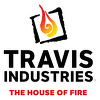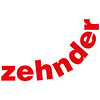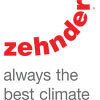Scan this code with your mobile device camera to take this page on-the-go!

https://redirect.aecdaily.com/s1773/www.aecdaily.com/course/880606

 Air control dampers are an essential component of a building’s HVAC system, regulating heating, cooling, and ventilation performance. Presented here is an introduction to control, balancing, backdraft, industrial, and multizone dampers; each type plays an important role in the HVAC system. Discussed are damper types, components, and performance metrics. Guidance is provided for damper specification, installation, maintenance, and inspection.
Air control dampers are an essential component of a building’s HVAC system, regulating heating, cooling, and ventilation performance. Presented here is an introduction to control, balancing, backdraft, industrial, and multizone dampers; each type plays an important role in the HVAC system. Discussed are damper types, components, and performance metrics. Guidance is provided for damper specification, installation, maintenance, and inspection.
Scan this code with your mobile device camera to take this page on-the-go!

https://redirect.aecdaily.com/s405633/www.aecdaily.com/course/928589

 Within building spaces, noise can be reduced by using materials or assemblies that isolate sound or mitigate its transmission. To do this, it is important to understand how sound moves through building materials and partitions and the impact of sound mitigation products. In this course, we look at the basics of sound as well as techniques and products to prevent sound transmission.
Within building spaces, noise can be reduced by using materials or assemblies that isolate sound or mitigate its transmission. To do this, it is important to understand how sound moves through building materials and partitions and the impact of sound mitigation products. In this course, we look at the basics of sound as well as techniques and products to prevent sound transmission.
Scan this code with your mobile device camera to take this page on-the-go!

https://redirect.aecdaily.com/s4877/www.aecdaily.com/course/1123480

 As many jurisdictions move toward regulating or even outright banning wood-burning and natural gas fireplaces, designers are turning to electric alternatives. Vapor fireplaces use only electricity and water vapor to produce an incredibly realistic flame effect with zero particulate emissions.
As many jurisdictions move toward regulating or even outright banning wood-burning and natural gas fireplaces, designers are turning to electric alternatives. Vapor fireplaces use only electricity and water vapor to produce an incredibly realistic flame effect with zero particulate emissions.
Scan this code with your mobile device camera to take this page on-the-go!

https://redirect.aecdaily.com/s1002402/www.aecdaily.com/course/1130971

 Humidity affects numerous industries, potentially leading to building damage and health problems. Mechanical dehumidifiers play a critical role in controlling humidity across different environments, ensuring comfort and safety while preventing any humidity or condensation issues that interfere with daily business. In this course, we provide insight into the principles of psychrometrics, enabling participants to understand the properties of air and water vapor mixtures significant to moisture control. We explore the operation of mechanical (vapor compression) dehumidifiers, their performance parameters and limitations, and installation configurations. Finally, we examine some examples of beneficial applications.
Humidity affects numerous industries, potentially leading to building damage and health problems. Mechanical dehumidifiers play a critical role in controlling humidity across different environments, ensuring comfort and safety while preventing any humidity or condensation issues that interfere with daily business. In this course, we provide insight into the principles of psychrometrics, enabling participants to understand the properties of air and water vapor mixtures significant to moisture control. We explore the operation of mechanical (vapor compression) dehumidifiers, their performance parameters and limitations, and installation configurations. Finally, we examine some examples of beneficial applications.
Scan this code with your mobile device camera to take this page on-the-go!

https://redirect.aecdaily.com/s692617/www.aecdaily.com/course/869237

 In order to address tile installation difficulties effectively and avoid failures, designers and specifiers must maintain full awareness of current knowledge, practices, and products. This course reviews potentially problematic contemporary tile installation issues along with the industry guidance, methodologies, and products available to address them.
In order to address tile installation difficulties effectively and avoid failures, designers and specifiers must maintain full awareness of current knowledge, practices, and products. This course reviews potentially problematic contemporary tile installation issues along with the industry guidance, methodologies, and products available to address them.
Scan this code with your mobile device camera to take this page on-the-go!

https://redirect.aecdaily.com/s1608/www.aecdaily.com/course/903341

 Ventilation grilles influence HVAC system performance but can pose aesthetic challenges for designers. Custom grilles made with modern fabrication techniques employ a variety of materials and finishes to create solutions that enhance and fully integrate with architectural interiors. This course discusses the basic mechanics of effective air distribution in buildings, performance characteristics of grilles, grille types, and custom design options.
Ventilation grilles influence HVAC system performance but can pose aesthetic challenges for designers. Custom grilles made with modern fabrication techniques employ a variety of materials and finishes to create solutions that enhance and fully integrate with architectural interiors. This course discusses the basic mechanics of effective air distribution in buildings, performance characteristics of grilles, grille types, and custom design options.
Scan this code with your mobile device camera to take this page on-the-go!

https://redirect.aecdaily.com/s14723/www.aecdaily.com/course/1000185

 Food and wine preservation refers to the process of storing products under ideal conditions in order to maximize longevity. Preserving food and wine maximizes its shelf life and flavor which, in turn, enhances the enjoyment of its consumption. Additionally, proper preservation results in less waste and saves the consumer money. This course reviews the causes of premature food deterioration, the optimal conditions for storing wine and food, and the solutions that are available with a focus on modern refrigeration units.
Food and wine preservation refers to the process of storing products under ideal conditions in order to maximize longevity. Preserving food and wine maximizes its shelf life and flavor which, in turn, enhances the enjoyment of its consumption. Additionally, proper preservation results in less waste and saves the consumer money. This course reviews the causes of premature food deterioration, the optimal conditions for storing wine and food, and the solutions that are available with a focus on modern refrigeration units.
Scan this code with your mobile device camera to take this page on-the-go!

https://redirect.aecdaily.com/s9351/www.aecdaily.com/course/978473

 Highly customizable electric heating solutions can provide either the main or supplemental heat for most indoor and outdoor spaces. Such solutions can harmonize beautifully with every architectural context and building configuration while addressing the full range of health, safety, comfort, and energy efficiency issues facing contemporary designers. This course examines the many supplemental electric heating solutions and devices available, their capabilities and configuration options, and how they can be customized to suit every unique architectural and engineering demand. It concludes with several illustrated cases.
Highly customizable electric heating solutions can provide either the main or supplemental heat for most indoor and outdoor spaces. Such solutions can harmonize beautifully with every architectural context and building configuration while addressing the full range of health, safety, comfort, and energy efficiency issues facing contemporary designers. This course examines the many supplemental electric heating solutions and devices available, their capabilities and configuration options, and how they can be customized to suit every unique architectural and engineering demand. It concludes with several illustrated cases.
Scan this code with your mobile device camera to take this page on-the-go!

https://redirect.aecdaily.com/s379346/www.aecdaily.com/course/945582

 An energy recovery ventilator (ERV) system provides occupants with filtered, balanced, and tempered air within their living space. Airborne contaminants can be greatly reduced with ERV systems. This course provides knowledge about the need, use, design, and installation of ERVs in the modern dwelling unit and when retrofitting existing structures. The course also addresses the environmental advantages of sustainable and healthy solutions for indoor air quality.
An energy recovery ventilator (ERV) system provides occupants with filtered, balanced, and tempered air within their living space. Airborne contaminants can be greatly reduced with ERV systems. This course provides knowledge about the need, use, design, and installation of ERVs in the modern dwelling unit and when retrofitting existing structures. The course also addresses the environmental advantages of sustainable and healthy solutions for indoor air quality.
Scan this code with your mobile device camera to take this page on-the-go!

https://redirect.aecdaily.com/s14532/www.aecdaily.com/course/1138134

 Traditional and modern, linear direct vent gas fireplaces safely provide supplemental heat while preserving indoor air quality. The course explores gas fireplace venting systems and heater- and decorative-rated fireplace options, electric fireplace options, functions, aesthetics, and applications. Also discussed are innovative technologies that enhance performance, applicable codes and standards, safety requirements and precautions, and size considerations.
Traditional and modern, linear direct vent gas fireplaces safely provide supplemental heat while preserving indoor air quality. The course explores gas fireplace venting systems and heater- and decorative-rated fireplace options, electric fireplace options, functions, aesthetics, and applications. Also discussed are innovative technologies that enhance performance, applicable codes and standards, safety requirements and precautions, and size considerations.
Scan this code with your mobile device camera to take this page on-the-go!

https://redirect.aecdaily.com/s2356/www.aecdaily.com/course/893368

 An air curtain, also known as an air door, employs a controlled stream of air aimed across an opening to create an air seal. This seal separates different environments while allowing a smooth, unhindered flow of traffic and unobstructed vision through the opening. This course discusses how air curtains work and why they can contribute to occupant comfort, energy efficiency, and indoor air quality when the door is open. It also reviews how air curtains improve whole-building energy efficiency versus conventional methods.
An air curtain, also known as an air door, employs a controlled stream of air aimed across an opening to create an air seal. This seal separates different environments while allowing a smooth, unhindered flow of traffic and unobstructed vision through the opening. This course discusses how air curtains work and why they can contribute to occupant comfort, energy efficiency, and indoor air quality when the door is open. It also reviews how air curtains improve whole-building energy efficiency versus conventional methods.
Scan this code with your mobile device camera to take this page on-the-go!

https://redirect.aecdaily.com/s1134927/www.aecdaily.com/course/1144645

 Locating mechanical and electrical equipment on a roof is often necessary for space and efficiency in a building design. However, it can be challenging to provide a means for safe maintenance access while preserving the roof membrane and structural integrity and not interfering with other rooftop equipment. This course presents the components that comprise rooftop support systems designed to solve these challenges, as well as system design considerations and compliance with the International Building Code® (IBC®) and the International Mechanical Code® (IMC®).
Locating mechanical and electrical equipment on a roof is often necessary for space and efficiency in a building design. However, it can be challenging to provide a means for safe maintenance access while preserving the roof membrane and structural integrity and not interfering with other rooftop equipment. This course presents the components that comprise rooftop support systems designed to solve these challenges, as well as system design considerations and compliance with the International Building Code® (IBC®) and the International Mechanical Code® (IMC®).
Scan this code with your mobile device camera to take this page on-the-go!

https://redirect.aecdaily.com/s9727/www.aecdaily.com/course/845810

 The materials we use have a significant impact on the environment, our communities, and our health. Consequently, material transparency—wherein manufacturers disclose vital sustainability information about their products—is an increasingly necessary element of modern life. This course examines the tools and resources that are available for both manufacturers and the A&D community that effectively communicate transparency information and optimization of building products. Also reviewed are the benefits of the new-generation insulated metal panels (IMPs) designed to achieve a trusted range of health and wellness certifications.
The materials we use have a significant impact on the environment, our communities, and our health. Consequently, material transparency—wherein manufacturers disclose vital sustainability information about their products—is an increasingly necessary element of modern life. This course examines the tools and resources that are available for both manufacturers and the A&D community that effectively communicate transparency information and optimization of building products. Also reviewed are the benefits of the new-generation insulated metal panels (IMPs) designed to achieve a trusted range of health and wellness certifications.
Scan this code with your mobile device camera to take this page on-the-go!

https://redirect.aecdaily.com/s4732/www.aecdaily.com/course/1143570

 The building envelope is the physical separator between the conditioned and unconditioned environment of a building and provides resistance to air, water, heat, light, and noise transfer. As a thermal barrier, spray polyurethane foam (SPF) offers numerous opportunities to contribute to building envelope performance and indoor air quality in several project types. This course presents the sustainable aspects of SPF, SPF fire and strength testing, and the benefits of SPF in below- and above-grade and rooftop applications.
The building envelope is the physical separator between the conditioned and unconditioned environment of a building and provides resistance to air, water, heat, light, and noise transfer. As a thermal barrier, spray polyurethane foam (SPF) offers numerous opportunities to contribute to building envelope performance and indoor air quality in several project types. This course presents the sustainable aspects of SPF, SPF fire and strength testing, and the benefits of SPF in below- and above-grade and rooftop applications.
Scan this code with your mobile device camera to take this page on-the-go!

https://redirect.aecdaily.com/s379346/www.aecdaily.com/course/885842

 Meeting the ventilation requirements of ASHRAE 62.2 and maintaining an energy efficient home means balancing the need for fresh outdoor air and the energy needed to condition it. In this course we will examine the ventilation requirements in ASHRAE 62.2, discuss how they can be met, and look at some solutions for energy efficient ventilating.
Meeting the ventilation requirements of ASHRAE 62.2 and maintaining an energy efficient home means balancing the need for fresh outdoor air and the energy needed to condition it. In this course we will examine the ventilation requirements in ASHRAE 62.2, discuss how they can be met, and look at some solutions for energy efficient ventilating.
Scan this code with your mobile device camera to take this page on-the-go!

https://redirect.aecdaily.com/s1078698/www.aecdaily.com/course/1097505

 Energy conservation and occupant well-being, comfort, and productivity are issues of increasing concern in building design. This course illustrates how radiant heating and cooling systems address these issues positively and efficiently. It encompasses the various types of systems available and how they can contribute to credit requirements in the LEED® v4.1 Building Design and Construction rating system and the WELL Building Standard™ version 2. System workings, design, aesthetic considerations, advantages, testing and measuring protocols, and installation procedures are reviewed, and the course concludes with several installation examples.
Energy conservation and occupant well-being, comfort, and productivity are issues of increasing concern in building design. This course illustrates how radiant heating and cooling systems address these issues positively and efficiently. It encompasses the various types of systems available and how they can contribute to credit requirements in the LEED® v4.1 Building Design and Construction rating system and the WELL Building Standard™ version 2. System workings, design, aesthetic considerations, advantages, testing and measuring protocols, and installation procedures are reviewed, and the course concludes with several installation examples.
Scan this code with your mobile device camera to take this page on-the-go!

https://redirect.aecdaily.com/s729880/www.aecdaily.com/course/1072597

 Infrared patio heaters sustainably increase safety and comfort in outdoor entertaining areas. There are many variables in creating ambient warmth, and the effectiveness and cost of heating an outdoor space depend on the design of the selected heating option. This course looks at the available outdoor heating options and their sustainability profiles, focusing on the types, color choices, mounting methods, and control options of electric infrared heaters. It includes a review of the steps required to select the best solution.
Infrared patio heaters sustainably increase safety and comfort in outdoor entertaining areas. There are many variables in creating ambient warmth, and the effectiveness and cost of heating an outdoor space depend on the design of the selected heating option. This course looks at the available outdoor heating options and their sustainability profiles, focusing on the types, color choices, mounting methods, and control options of electric infrared heaters. It includes a review of the steps required to select the best solution.
Scan this code with your mobile device camera to take this page on-the-go!

https://redirect.aecdaily.com/s14798/www.aecdaily.com/course/1045296

 The operation of mechanical equipment generates vibration and noise, which, if left untreated, can damage the building structure and the equipment itself and be a source of discomfort for building occupants. This course examines HVAC equipment vibration and the specification of isolation solutions. It provides discussions on each of the ASHRAE isolator and base types and describes some acoustical floor treatments.
The operation of mechanical equipment generates vibration and noise, which, if left untreated, can damage the building structure and the equipment itself and be a source of discomfort for building occupants. This course examines HVAC equipment vibration and the specification of isolation solutions. It provides discussions on each of the ASHRAE isolator and base types and describes some acoustical floor treatments.
Scan this code with your mobile device camera to take this page on-the-go!

https://redirect.aecdaily.com/s795432/www.aecdaily.com/course/887663

 Universal hot water availability is generally taken for granted. At a time when energy prices and sources, environmental concerns, and water shortages are increasing in significance, it is important to produce hot water in a manner that addresses all these issues. This course explains how electric tankless water heaters (ETWHs) do this while also improving health and safety conditions and reducing costs. The examination includes detailed descriptions of many types of ETWHs and the basic calculations and selection criteria for the most suitable system.
Universal hot water availability is generally taken for granted. At a time when energy prices and sources, environmental concerns, and water shortages are increasing in significance, it is important to produce hot water in a manner that addresses all these issues. This course explains how electric tankless water heaters (ETWHs) do this while also improving health and safety conditions and reducing costs. The examination includes detailed descriptions of many types of ETWHs and the basic calculations and selection criteria for the most suitable system.
Scan this code with your mobile device camera to take this page on-the-go!

https://redirect.aecdaily.com/s19863/www.aecdaily.com/course/1077571

 Firestopping is the process of sealing openings around penetrants or in joints or gaps between fire-rated assemblies to restore hourly fire resistance ratings. It is a critical part of fire containment and a balanced fire and life safety plan. This course outlines resources and code requirements that architects and designers should be aware of while preparing specifications for firestop systems in their projects. The course also reviews common mistakes to avoid.
Firestopping is the process of sealing openings around penetrants or in joints or gaps between fire-rated assemblies to restore hourly fire resistance ratings. It is a critical part of fire containment and a balanced fire and life safety plan. This course outlines resources and code requirements that architects and designers should be aware of while preparing specifications for firestop systems in their projects. The course also reviews common mistakes to avoid.
Scan this code with your mobile device camera to take this page on-the-go!

https://redirect.aecdaily.com/s3379/www.aecdaily.com/course/869438

 The facade is one of the most significant contributors to the energy consumption and comfort parameters of any building. This course explores high-performance building envelopes and the use of advanced insulated metal panel systems featuring integrated daylighting and ventilation components that combine to provide weathertightness and maximum thermal performance.
The facade is one of the most significant contributors to the energy consumption and comfort parameters of any building. This course explores high-performance building envelopes and the use of advanced insulated metal panel systems featuring integrated daylighting and ventilation components that combine to provide weathertightness and maximum thermal performance.
Scan this code with your mobile device camera to take this page on-the-go!

https://redirect.aecdaily.com/s1773/www.aecdaily.com/course/988588

 Louvers are an essential part of every HVAC system, facilitating appropriate airflow and inhibiting unwanted penetration by water, snow, or debris through wall openings and into HVAC ductwork. However, they can have other purposes. Their simple design makes them a versatile addition and a unique style option to any project. This course presents the types, components, and applications of louvers, along with the primary specification considerations when selecting a louver solution.
Louvers are an essential part of every HVAC system, facilitating appropriate airflow and inhibiting unwanted penetration by water, snow, or debris through wall openings and into HVAC ductwork. However, they can have other purposes. Their simple design makes them a versatile addition and a unique style option to any project. This course presents the types, components, and applications of louvers, along with the primary specification considerations when selecting a louver solution.
Scan this code with your mobile device camera to take this page on-the-go!

https://redirect.aecdaily.com/s18122/www.aecdaily.com/course/1027351

 Energy creation, distribution, and consumption are all in a period of transition. Understanding this transition and its various aspects is critical to sustainable transitional energy planning (STEP). This course delves into the reasoning behind the STEP approach and its contributions to creating resilient communities and explores available exhaustible and renewable energy resources and innovations in the energy sector that can be leveraged by STEP.
Energy creation, distribution, and consumption are all in a period of transition. Understanding this transition and its various aspects is critical to sustainable transitional energy planning (STEP). This course delves into the reasoning behind the STEP approach and its contributions to creating resilient communities and explores available exhaustible and renewable energy resources and innovations in the energy sector that can be leveraged by STEP.
Scan this code with your mobile device camera to take this page on-the-go!

https://redirect.aecdaily.com/s19871/www.aecdaily.com/course/888488

 In the last couple of decades, houses have become progressively more airtight due to energy efficiency and cost concerns. While air infiltration and exfiltration rates have been significantly reduced, the need for an efficient ventilation system has become extremely important. This course evaluates different types of mechanical ventilation systems and discusses why heat recovery ventilation (HRV) and energy recovery ventilation (ERV) systems are characterized by a high level of energy efficiency and as an effective means for improving indoor air quality.
In the last couple of decades, houses have become progressively more airtight due to energy efficiency and cost concerns. While air infiltration and exfiltration rates have been significantly reduced, the need for an efficient ventilation system has become extremely important. This course evaluates different types of mechanical ventilation systems and discusses why heat recovery ventilation (HRV) and energy recovery ventilation (ERV) systems are characterized by a high level of energy efficiency and as an effective means for improving indoor air quality.
Scan this code with your mobile device camera to take this page on-the-go!

https://redirect.aecdaily.com/s579297/www.aecdaily.com/course/1069235

 Insights gained during the COVID-19 pandemic have shown how vulnerable we are to contagion through indoor air, but the pandemic also revealed many new solutions to better ensure indoor air quality. In this course, we examine the role of humidity in indoor air quality and its impact on air pollutants. We also discuss how to control humidity in residential and commercial spaces and review several solutions for humidity control.
Insights gained during the COVID-19 pandemic have shown how vulnerable we are to contagion through indoor air, but the pandemic also revealed many new solutions to better ensure indoor air quality. In this course, we examine the role of humidity in indoor air quality and its impact on air pollutants. We also discuss how to control humidity in residential and commercial spaces and review several solutions for humidity control.